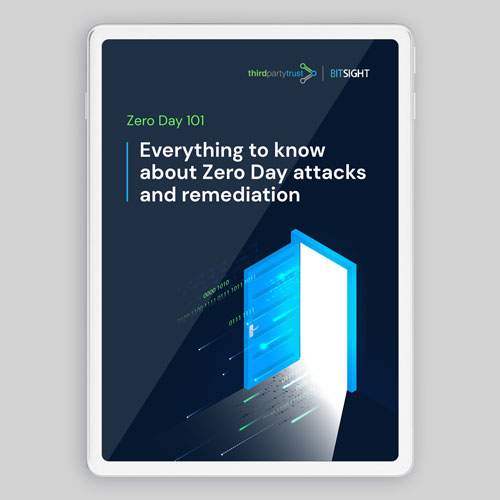Okta suffers third party data breach: Preventing supply chain attacks
This week, the news of yet another third party data breach put thousands of businesses on high alert.
Okta, an authentication company used by thousands of organizations around the world, confirmed that cybercriminals had access to one of its outsourced employees’ laptops for five days in January 2022, and that around 366 companies (2.5% of its customer base) may have been affected.
On March 22, 2022, a number of screenshots were published online that were taken from a computer used by one of Okta’s third party customer support engineers. The Lapsus$ cybercrime group posted these screenshots to its Telegram channel, claiming to be of Okta’s internal systems, including one that presumably showed Okta’s Slack channels, and another with a Cloudflare interface, as reported by The Verge.
A blog post signed by David Bradbury, Chief Security Officer at Okta, states that the Okta service has not been breached and there are no corrective actions that need to be taken by their 15,000 customers, which include Peloton, Sonos, T-Mobile, and the FCC.
Threats to IAM (Identity and Access Management) Solutions
Okta is one of many IAM (identity and access management) solutions in the world. Such tools protect access to the right data from the right people at the right time. They are, in essence, gatekeeping solutions that are more and more in demand as data is digitized and stored in the Cloud.
However, Okta is not unique; like many breaches before them, they are merely a big example that has captured the headlines as of late. For companies who utilize IAM solutions, the threat of data breaches is ever growing, especially as increasing numbers of third party vendors request access to centralized data.
As a result, one takeaway from this recent news is for organizations to keep their data safe by centralizing and systemizing how they vet and monitor their third party members of their supply chain. By maintaining the digital gates at a distance, companies can ensure the inner perimeter of their defenses are less vulnerable to direct attacks.
Read More: What is a vendor risk assessment, and how do you conduct one?
Okta breach – What happened?
Like most SaaS businesses nowadays, Okta uses several third party vendors (which they call “sub-processors”) to expand their workforce. Sitel, the affected organization, is a vendor that provides Okta with contract workers for their Customer Support organization.
Okta’s investigation determined that the attacker got access to the Sitel support engineer’s computer using Remote Desktop Protocol (RDP), which allows one computer to remotely connect to another one over a network connection.
“While the attacker never gained access to the Okta service via account takeover, a machine that was logged into Okta was compromised and they were able to obtain screenshots and control the machine through the RDP session,” stated Bradbury.
The statement also clarified that the access that a support engineer has is limited to basic duties in handling inbound support queries. There was no “god-like access” granted as the support ecosystem is built with least privilege in mind, to ensure that engineers are granted only the specific access they require to perform their roles.
“They are unable to create or delete users. They cannot download customer databases. They cannot access our source code repositories,” confirmed Bradbury.
Third party data breaches continue to put businesses on high alert
A third party data breach is an incident where sensitive data from an organization is stolen and exposed through one of its third party vendors. In a word, the vendor’s systems are misused to access the organization’s systems.
Because attackers target a member of the victim’s supply chain, a third party data breach might also be called a supply chain attack.
Examples of third party data breaches include SolarWinds and Kaseya, and the Lapsus$ group has claimed responsibility for other high-profile incidents affecting Nvidia, Samsung, Microsoft, and Ubisoft, in some cases stealing hundreds of gigabytes of confidential data.
What’s worrying about this case is that outsourced customer support companies like Sitel often have wide access to the organizations that they support, in order to facilitate solving customer requests.
As noted by TechCrunch, attackers have previously targeted customer support companies, which often have weaker cybersecurity defenses than some of the highly-secured companies that they support. Microsoft and Roblox have both experienced similar targeted compromises of customer support agents’ accounts that led to access of their internal systems.
Preventing third party security incidentes after the Okta data breach
Third party risk management (TPRM) helps minimize the risk of third party data breaches from different types of connections, including sub-processors, contractors, vendors, suppliers, and more.
Read More: The ultimate guide to TPRM
Here are some ways in which a TPRM program can help secure your supply chain and prevent a third party data breach:
- Streamlining due diligence and vendor risk assessments to assess vendors before onboarding
- Automating the onboarding and reassessment process for more agile risk mitigation
- Facilitating continuous monitoring based on real-time data feeds and security ratings
- Increasing visibility over risk from third party and fourth party relationships
- Customizing and updating security requirements upon newly discovered threats and vulnerabilities
- Identifying vendors who no longer meet security standards and facilitating their offboarding without causing business continuity issues
ThirdPartyTrust can help with a complete feature set for TPRM workflow management, security document storage, and process automation. Our tool centralizes communication and information exchange with third party vendors, making it easy to achieve 100% visibility over risk across your supply chain.
Let us show you how ThirdPartyTrust can help you prevent a third party data breach

Don’t let zero days be “wake up calls.”
Unpredictable vulnerabilities will be an ongoing concern for security teams inthe foreseeable future.
In this guide you will learn the fundamentals of zero days, patterns from our statistical analysis, and tips to reduce risk and remediate zero days if/when they happen.




